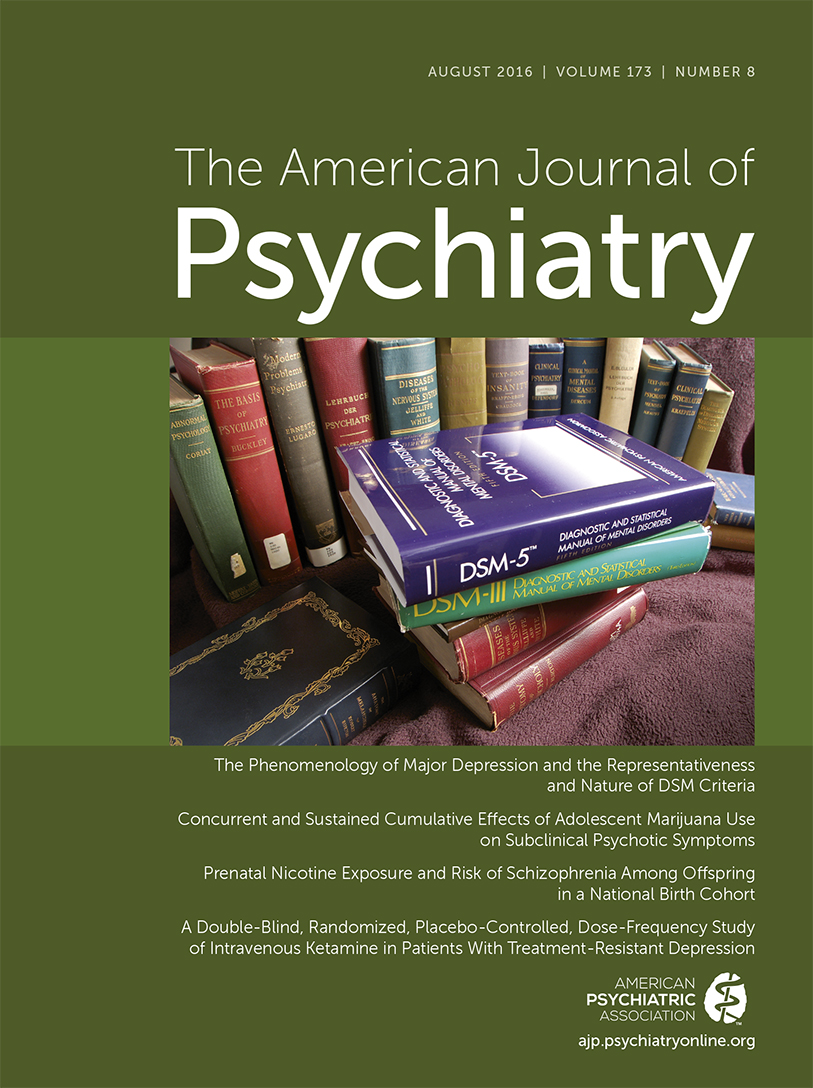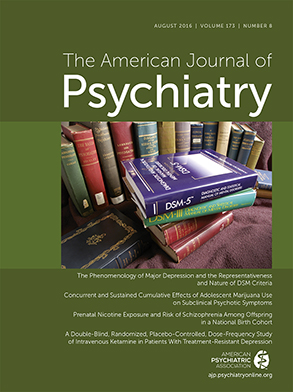T
o the E
ditor: The excellent article by Clementz et al. (
1), published in the April 2016 issue of the
Journal, contains innovative methods and novel findings. The authors investigated a large number of psychotic patients along with their relatives and unrelated healthy control subjects using cognitive and neurophysiological methods. They identified principal components among dependent variables, determined the number of clusters necessary to optimally explain the source data structure, spanned a nine-component vector space containing three identified clusters, and were able to reduce dimensionality into a final two-dimensional matrix. Ultimately, those two composite functions (termed “cognitive control” and “sensorimotor reactivity”) reliably separated the three data clusters (termed “psychosis biotypes”), as shown by cross-validation. This is a fine example of employing advanced multivariate analysis methods to arrive at a transnosological classification of psychiatric disorders, as was intended with the recently established Research Domain Criteria initiative.
Importantly, the resulting biotypes are derived from nosological entities, but after multiple mathematical transformations, they no longer represent nosological entities; instead, these biotypes might be understood as taxonomic entities. As opposed to the authors’ interpretation of psychosis biotypes, however, it is actually not fully clear which taxonomy comprehensively describes these biotypes. Starting from a system classification perspective, a nosological term cannot be applied to a transnosological data structure. To retranspose the taxonomic finding of distinct biotypes to our nosological system of psychoses, the authors need to show in the final model that each biotype is different from healthy controls, much like how each psychosis is different from a normal state. The authors tested for such differences on the level of principal components (see Table 1 in the article) and single discriminant functions (see Figure 1) but not after the final transformation that spans three distinct biotypes in a two-dimensional matrix. The authors’ reason not to make a comparison with control subjects at this stage is that all included variables already differentiated between psychotic and healthy persons. Their own data, however, seem to speak against this argument. First, the cognitive control function does not statistically separate biotype 3 from healthy controls despite being composed of variables that differentiated between psychotic and healthy persons in the first place. Second, Figure S3a (in the data supplement that accompanies the online edition of the article) suggests that data points obtained from healthy controls largely overlap with biotype 3 and probably with biotype 2 as well. This, however, is only a visual impression based on the controls’ centroid and standard deviation of data point distribution; a formal analysis is missing.
To summarize, if each biotype is distinct from healthy controls within the final two-dimensional matrix, then these biotypes likely code for meaningful processes that could considerably aid our understanding of transnosological processes underlying psychosis. If this is not the case, the biotypes’ significance remains somewhat unclear despite their convincing separation.

